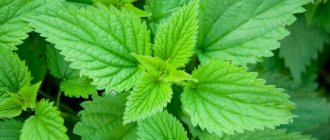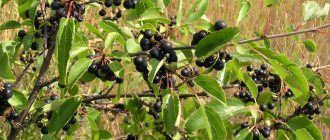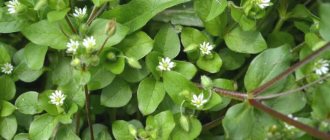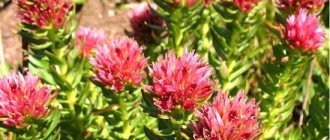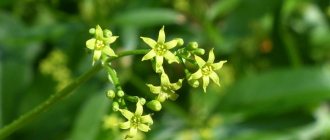Calamus medicinal properties. What is calamus, medicinal properties and contraindications, what are the beneficial properties of this plant, all this is of great interest to those who lead a healthy lifestyle, monitor their health, and are interested in traditional methods of treatment, including the use of medicinal herbs and spices . So we will try to answer these questions in the following article.
Calamus (common calamus, or amyra root) is a perennial herbaceous plant that grows on the banks of rivers, lakes and swamps. India and China are considered its homeland. Currently widespread in North America, Europe, Siberia, 10th East Asia and the Far East. It is cultivated as a herb.
The plant has an erect triangular stem, the height of which can reach from 50 cm to 1.2 m. It has a thick, flattened creeping rhizome of a cylindrical shape, greenish or brownish-yellow in color, the diameter is up to 3 cm, and the length is up to 1.5 m.
In its lower part, thin roots up to 50 cm long are formed. Calamus rhizomes are distinguished by a bitter, spicy-burning taste and strong aroma.
The leaves of calamus are narrow-linear, have a rich green color, and develop on the lateral branches and the top of the main rhizome. The length of the leaf reaches an average of 80-100 cm. The stem appears to be wrapped in leaves, which are closely adjacent to it at the base.
The flowers are greenish-yellow in color. The perianth is made up of 6 petals. The flowers form cylindrical cobs, the length of which varies from 4 to 12 cm. The flowering period begins in June and continues until August.
The fruit is a berry colored pale green or red.
The plant propagates vegetatively. For planting in culture, sections of rhizomes are taken. They are collected and stored in late autumn or early winter. The rhizomes are thoroughly washed with running water and dried in the open air.
When heat drying, a special temperature regime must be observed - no more than 30 °C. Drying at a higher temperature leads to evaporation of the essential oil and a decrease in the quality of the raw material. Properly dried rhizomes when scrapped have a pinkish-cream color.
Before storing, long rhizomes must be cut into pieces no longer than 20 cm. The shelf life of harvested rhizomes is no more than 3 years.
How to harvest calamus roots
After which they should be washed off the ground, all excess removed from the roots and cut into pieces of 20-30 cm.
The roots are first air-dried, then the roots are dried in a well-ventilated area.
When artificially drying, the temperature should not exceed 25-30 degrees; if this rule is neglected, the roots will become unusable, because at elevated temperatures the essential oil evaporates .
Medicinal properties
- improved digestion
- stimulates appetite
Collection and storage
Harvesting marsh calamus should begin in early autumn or spring . You can collect the plant using a regular rake, since it is too difficult to try to do it with your bare hands. The rhizome is separated from the flowering part and stem and washed. The resulting components need to be laid out in the open air for a couple of days to dry completely.
After complete drying, the root must be divided into parts, each of which is no more than twenty centimeters in length. In a situation where the roots are of considerable thickness, they need to be split. This allows you to make the preparation and drying process much faster, as well as increase storage time.
The prepared part of the roots is placed in a container with an iron top and left to mature at thirty-five degrees. It is extremely important not to exceed this value. Otherwise, the process of evaporation of essential oils will begin. At the end, the product will be practically useless.
In the process, try to break the rhizome . If this does not require much effort, then the product is ready for further processing. It can be placed in a glass container or a fabric bag. Storage is carried out in dark, dry and cool places. The average time when calamus does not lose its properties during storage is one year.
The finished raw material is light in weight and yellowish-brown in color, while the pulp acquires a white or pink tint.
Medicinal properties of calamus
Calamus is a powerful nootropic herb that affects higher mental functions.
Nootropics stimulate mental activity, activate cognitive functions, improve memory and increase learning ability.
It has been known as a medicinal plant since ancient times, especially in China and India.
It is an important ingredient in most Ayurvedic medicines.
In the 16th century, German pharmacists sold several hundredweight of this root.
- Bitter essential oil and acorine increase appetite. It increases the secretion of gastric juice, improves digestion, and reduces stomach pain.
- Widely used in herbal medicine as an aromatic stimulant and mild tonic.
- Highly valued as a brain and nervous system rejuvenator and as a remedy for digestive disorders in Ayurveda.
- In small doses it reduces gastric acidity, while large doses increase gastric secretions, which is why it is recommended in the treatment of anorexia nervosa.
- Chewing the root relieves toothache.
- Activates the speech center of the brain. It is useful in treating speech disorders.
- Very effective for mental disorders.
- Used to treat schizophrenia, anxiety, depression and epilepsy. It also improves memory and learning processes.
- Used to treat throat conditions including sore throat, hoarseness, sore throat and related symptoms.
- It improves the pitch and quality of the voice.
- Used as an expectorant. Calamus liquefies phlegm and expels it from your body. Treats whooping cough, especially in children.
- Used in the treatment of various types of cancer such as lung cancer, breast cancer and liver cancer.
Used in the form of infusions, tinctures and powders.
- stomach diseases
- colitis
- hepatitis
- cholecystitis
- tonic for central nervous system depression
- kidney disease
- liver disease
- bladder diseases
- peptic ulcer of the stomach and duodenum
- bad breath
- inflammation of the mouth and gums
- inflammation of the larynx
- angina
- chronic tonsillitis
- stomatitis
- diarrhea
- rheumatism
- gout
- joint pain
- hypothyroidism
- arthritis
- swelling
- obesity
- asthma
- mouth ulcers
- syphilis
Digestive system
Calamus instantly relieves stomach problems. It cleanses the stomach and also relieves headaches caused by poor digestion. It relieves flatulence and colic, increases appetite. Used to treat anorexia, gastritis and stomach ulcers.
Anti-smoking
Chewing calamus root may cause you to dislike the taste of tobacco. Thus, those who are addicted to smoking can quit this habit by using this root. In addition, chewing or smoking tobacco often causes bad breath. Chewing the root can also help eliminate tobacco odor.
Oral diseases
Treats mouth ulcers and eliminates bad odor. Ayurveda uses the root as a pain reliever for toothache.
Treats insomnia
The aroma of calamus root is calming and can be used to treat insomnia. This calming effect can help relax your body and your mind.
Cough and fever
Along with a decoction of licorice root, it has a positive effect on cough, fever and colic in children. For a dry cough, chew calamus root for several minutes.
Skin diseases
Calamus root paste can be used externally for diseases such as eczema, ringworm and scabies. In the Siddha system it is used as a disinfectant for vaginal infections and foul-smelling discharges, mainly after childbirth.
Prevents infections
Calamus root is also capable of preventing infections, both internal and external. Due to its toxic substance, calamus root is used as a natural antibiotic.
For epilepsy
In the Siddha system, calamus is used with equal portions of asafoetida, haritaki, black salt, dry ginger, long pepper and black pepper to treat epilepsy and mental disorders.
Contraindications
The use of calamus is not recommended for the following categories of citizens:
- Those who have bleeding, regardless of their nature;
- Suffering from hypotension;
- Those who have increased acidity of gastric juice;
- For peptic ulcer disease in the acute phase;
- Women during pregnancy;
- Patients suffering from inflammatory diseases of the renal system in the acute phase;
- In the presence of individual allergic reactions.
Folk remedies from calamus root
- The rhizome powder is drunk with warm milk for sore throat.
- Preparations made from the rhizome are used to stimulate the flow of urine, relieve constipation and cleanse the body of impurities.
- Stewed rhizome is given for fever, cough and poisoning.
- A mixture of rhizome powder with dried ginger powder and honey is taken for partial paralysis of the mouth, chin and cheeks.
- A mixture of rhizomes and cashew oil is used to relieve swollen joints and sore muscles.
- For this, rubbing is used.
- A mixture of rhizome powder and honey is taken as a cure for epilepsy and to treat loss of sanity.
To stimulate appetite and for gastrointestinal diseases
1 tsp crushed roots, pour 2 cups of boiling water, boil for 15 minutes. Drink ½ glass 3 times a day before meals.
For the treatment of jaundice
1 tsp crushed roots, pour 1 cup of boiling water, leave for 20 minutes. Strain. Drink ½ glass 4 times a day.
For inflammation of the mouth and gums
1 tsp Pour 1.5 cups of boiling water over the crushed roots and leave for 2 hours. Strain. Rinse your mouth with warm infusion.
For bad breath
1 tbsp. Pour 1 cup of boiling water over the crushed roots and leave for 30 minutes. Strain. Rinse your mouth.
For inflammation of the larynx, sore throat, chronic tonsillitis, stomatitis
1 tbsp. Add crushed roots to 1 glass of cold water and leave for 5 hours. After this, boil for 20 minutes. Strain. Rinse your mouth.
For gastritis with low acidity
1 tbsp. Pour 1 cup of boiling water over the crushed roots and leave for 20 minutes. Strain. Take ½ glass 4 times a day 30 minutes before meals.
For diarrhea
Take ½ calamus roots and ½ oak bark. 1 tbsp. collection, pour 1 cup of boiling water. Leave in a thermos overnight. Strain. Drink ¼ glass 3-4 times a day before meals.
For rheumatism, gout, joint pain, arthritis
Grind the roots into powder. The daily dose of powder is 5 g. Take before meals.
Take baths for joint pain
2 tbsp. pour 1 cup of boiling water over the roots. Boil for 20 minutes. Leave for 30 minutes. Strain. Take the bath at night for 10-12 days. Water temperature 35-36 degrees.
For cholecystitis
1 tsp. Pour 1 cup of boiling water over the crushed roots and leave for 20 minutes. Strain. Drink 1/2 glass 4 times a day.
For diseases of the bladder, kidneys and urinary tract
1 tsp. pour 1 cup of boiling water over the roots and leave for 20 minutes. Strain. Drink 1/2 glass 4 times a day 30 minutes before meals.
For heartburn
Grind the roots into powder. Take 3-4 times a day, on the tip of a knife. Course 2-3 weeks.
For scrofula, rickets
1 tbsp. l. roots, pour ½ cup boiling water. Leave for 2 hours. Strain. Take according to
1 tbsp. spoon, 3 times a day, 30 minutes before meals.
For diathesis
Take baths. Pour 300 g of rhizome into 3 liters of water. Boil over low heat for 20–30 minutes. Strain and pour into the bath.
For eczema, allergic skin rashes
Take baths. 2 tbsp. l. roots, pour 1 liter of boiling water, boil for 20 minutes, leave for 30 minutes. Strain. The course of treatment is 10–12 baths. Water temperature 35-36 degrees.
For various wounds
Grind the calamus roots into powder and sprinkle it on the wounds.
For irregular menstruation
1 tsp. pour 1 cup of boiling water over the roots and leave for 20 minutes. Strain. Drink ½ glass 4 times a day 30 minutes before meals.
For hair loss
1 tbsp. l. pour 1 cup of boiling water over the roots and leave for 30 minutes. Rub into hair roots.
For dandruff
2 tbsp. spoons of roots pour 1 liter of water, boil for 15 minutes. Strain. Make masks from the decoction: rub the decoction into the roots and leave for 20 minutes. There is no need to rinse the decoction from your hair.
For oily hair
2 tbsp. spoons of roots pour 1/2 liter of boiling water, boil for 2-3 minutes over low heat, cool, strain. Add a tablespoon of vinegar or the juice of 1 lemon, 40 ml of calendula alcohol tincture. Rub into hair roots.
For split ends of hair
2 tbsp. spoons of roots, 2 tbsp. burdock roots pour 1.5 liters of water, boil for 20 minutes. Leave for 6 hours. Rub the decoction into the scalp.
For the flu
Chew the roots.
Compote of calamus and apples
You can make compote from both fresh and dried apples. Fresh apples 300 g (if dry, take 3 times less), pour 1 liter of water and cook until tender. Then add 2 tbsp. dry roots of calamus, if the roots are fresh, you will need 1 cup. Boil. After this, leave for 5-10 minutes. The compote is ready, you can sweeten it if desired. Preferably with honey, when the compote has already cooled down and its temperature does not exceed 40-50 degrees.
To secrete gastric juice (achylia)
Calamus rhizomes 1 part, cinnamon bark 1 part, trifoliate leaf 1 part, orange peel 2 parts, centaury herb 2 parts, wormwood herb 2 parts. 1 tsp collection, pour 1 cup of boiling water. Cool. Strain. Drink 1/4 cup 4 times a day, before meals.
Good to know…
Calamus has been known as a spicy plant since the times of the ancient Jews and Persians, and ancient Greek and Roman doctors began to use it as a medicine. In particular, Hippocrates left descriptions of medicines made from amyra root (calamus).
The ancient Greek physician Dioscorides recommended using this plant for diseases of the spleen, liver, respiratory tract, and also as a tonic and diuretic. The ancient Roman physician and scientist Pliny the Elder gives in his works descriptions of calamus and medicines made from it. Avicenna used calamus as a diuretic and as a cleanser for diseases of the stomach and liver.
Waterfowl love to hide in the thickets of calamus. Muskrats and muskrats actively use calamus rhizomes in their diet, and ducks readily eat the seeds (where they set and ripen).
Use in cooking
Dried calamus rhizomes are quite suitable for replacing spices such as bay leaf, nutmeg, ginger and cinnamon.
Many people use calamus in the preparation of fruit soups, sweet dishes and fruit salads, as a flavoring for confectionery and bread. The rhizomes are boiled in syrup and candied for confectionery. The essential oil and root are used to produce various drinks.
A tea is prepared from calamus, which effectively stimulates the appetite, fights heartburn and stimulates the normal activity of the gallbladder. It is added in small quantities when preparing various soups, sauces, broths, fried meat, cabbage and potatoes, and when canning fish.
In Poland, calamus leaves are often added to dough to give the bread a special flavor.
In Turkey, candied calamus rhizomes are a valuable delicacy.
Application in horticulture
A number of varieties have been bred for the decorative use of calamus in horticulture. Since the plant has an insecticidal effect, it is often planted in artificial reservoirs.
Other uses
- In China, every year on the fifth day of the fifth month, bunches of calamus leaves are laid out near beds, and pieces of rhizomes and branches are placed near windows and doors. According to the Chinese, this ritual wards off any evil that might enter the house.
- In some areas, the leaves of the plant are placed around the house for aromatization and to combat harmful insects.
- The essential oil of calamus rhizomes is actively used in perfumery (for flavoring toilet soaps, dental elixirs, powders, pastes and powders, creams and various lipsticks), in the production of alcoholic beverages (for the preparation of liqueurs, bitter vodkas, beer, fruit essences) and in fisheries. industry (to give fish a pleasant aroma and a slightly bitter taste), as well as in cooking and confectionery production.
- In the Caucasus, calamus rhizomes are used for tanning leather.
Tonic tea
- Calamus roots (1 part)
- Veronica officinalis (2 parts)
- St. John's wort (14 parts)
- Lovage, root (4 parts)
- Wild strawberry, leaves (2 parts)
- Juniper, fruits (1 part)
- Ruta fragrant (4 parts)
- Yarrow (2 parts)
- Chicory root (2 parts)
- Rose hips, fruits (4 parts)
2 tbsp. collection, pour 0.5 liters of boiling water. Leave overnight. Take 3 times a day, 30 minutes before meals, in equal parts.
Botanical description
The height of this semi-aquatic, perennial herbaceous plant reaches 120 cm. The stem is erect, the leaves are xiphoid.
The leaves often have a depression along their entire length, slightly offset from the center. One edge of the leaf is wavy and curly. Their width is 2 cm. They grow directly from a creeping rhizome and form a basal rosette.
The flower is a conical-shaped inflorescence located on a flower-bearing triangular stem.
It is covered with greenish-yellow, bisexual, pleasantly scented flowers that bloom in June-July. But they are extremely small and inconspicuous. The cob extends obliquely and upward from the stem. A green covering leaf emerges from the base of the inflorescence, which looks like a continuation of the flowering stem. The length of the cob is 3-8 cm.
The fruits are tiny brown pyramid capsules. Contains about four seeds. Ripen in July and August.
The rhizome is cylindrical, knotty, spongy. It spreads over muddy soil, clinging to it with small fibrous roots.
Calamus root
Covered with scales of already dead leaves. The length of the horizontal root reaches 1.5 meters, and the diameter is 3 cm. The rhizome, which is brown in appearance, is white when cut, with a pink tint. The taste is bitter, the aroma is spicy.
Calamus root in Ayurveda
Headache. Make a paste from the roots. Apply this to the sore area.
Rheumatoid arthritis. Apply the root paste to the affected areas.
Cholera. Grind the roots. Boil 1 teaspoon in 1 liter of water. Strain. Drink 4 times a day.
Cough. Roast calamus root and make powder out of it. Take a pinch of this powder and mix with honey. Take 2 times a day.
Stomach upset. Drink a decoction of the root 4 times a day.
Infection. Chew or lick a small piece of the root.
Skin ulcers and wounds. Grind the root into powder. Sprinkle them on the ulcer or wound.
Whooping cough. Take 1 tablespoon of calamus powder with honey 2 times a day.
Stomach problems. Chew small pieces of the root and swallow the saliva. For chronic diseases, the root can be chewed 3-4 times a day. Do not swallow the pulp.
Smoking. Chew the dried root.
Wounds, burns and ulcers. Place 1 tablespoon in ½ cup of boiling water and leave for 5 minutes. Used as an external remedy for burns, wounds and ulcers.
Bloating. Roast the root, mix with coconut oil and apply to the stomach for 30 minutes.
Asthma. Prepare a decoction. Take 1 teaspoon every 4 hours.
Epilepsy. Tie the rhizome around your waist. Nervous disorders. Consume 1 mg of rhizome powder daily. It helps in strengthening the nervous system. Note: Consumption of more than 1 g will result in vomiting.
Autism. Prepare a decoction of the roots. Take 2 tablespoons 2 times a day.
Cold. Add root powder to boiling water. Inhale the vapors for 3-5 minutes. Speech disorders. Mix the crushed root with honey. Apply this mixture on your tongue. Or prepare a decoction by adding 1 tablespoon of dried root to 2 cups of water and boil for 5 minutes. Take 1 glass per day.
Aphrodisiac. Make a tea from the roots. Strain and drink. This will increase your sexual potency. A sore throat. Take a piece of root and grind it. Take a small piece and suck on it for 3-5 minutes.
Stuttering. Take a pinch of calamus powder and mix with honey. Take regularly. This will help in treating stuttering disorders.
Throat diseases. Consume root powder mixed with honey regularly. It cures all throat diseases.
Amnesia. Dry small pieces of roots in the shade. They then need to be ground to make powder. Consume this powder with warm milk daily, morning and evening.
Tonsillitis. Apply the paste of crushed roots on your throat for 10-12 hours. Relieves inflammation.
Bloating. Take cumin, chamomile and calamus root. Prepare a decoction. Drink it 2 or 3 times a day.
Colic. Prepare a decoction of cumin, chamomile and calamus.
Bloating. Mix the ash generated by burning the roots with castor oil. Apply the paste to the lower abdomen.
Stomach problems. Apply the paste by mixing the ash obtained by burning sweet flag roots with castor oil on the lower abdomen. Do this regularly until the symptoms disappear.
Cough. Grind the roots into powder. Mix 1/4 teaspoon with the same amount of licorice powder. Add the mixture to 2 cups of water. Prepare a decoction. Take 4 teaspoons, 3 times a day.
Fever. Mix licorice root powder and calamus in equal proportions. Prepare a decoction in 2 glasses of water. Cool. Take 4 times a day in equal parts.
Abdominal pain. ¼ teaspoon calamus powder and licorice root. Prepare a decoction in 2 glasses of water. Drink 20 ml, 3 times a day.
Diarrhea. Take 1/2 teaspoon of powder. Mix with honey. Take every morning on an empty stomach.
Fever. Mix honey with 2 pinches of calamus powder. Take every morning on an empty stomach.
Bloating. Grind the dried calamus roots into powder. Take a pinch and mix with honey. Take every morning.
Baldness. Take 5 grams of calamus root powder and mix it with 10 grams of coconut milk. Apply the paste to the affected part. Leave for 30 minutes. Rinse with water.
Stomach upset. Burn the calamus roots to ash. Mix a pinch of ash with honey. Take 1 time per day.
Toothache. Take equal quantities of cumin and calamus. Grind into powder in equal quantities. Apply to the sore tooth overnight.
Abdominal diseases. 50 g calamus root and 30 g licorice root powder. Prepare a decoction. Drink 10 ml, 3 times a day.
Type and places of growth
This species is not an annual species. Approximately six varieties have been identified, but only two are recognized in official sources. There you can also find the names ordinary and cereal. It grows on the banks of fresh water, but is also found near swamps and small streams . It was the habitat that gave the grass its characteristic name.
Calamus is fruitful. Its fruit can be red or green. Botanists put forward the version that the grass came to Europe not without the help of importation. History knows the facts of the use of roots by Mongol-Tatar soldiers - they placed them in a pond. It was believed that calamus would help make the liquid safer by purifying it and preparing it for ingestion. For this reason, another popular name “Tatar potion” was established.
The marsh calamus has the ability to take root, which gave it the opportunity to spread to all corners of Europe. The grass looks like a small shrub, with a height not exceeding 1.6 meters. More often, the height of the bush is about 1.2 meters.
The leaves are bright green in color, can grow up to a meter in length and three centimeters in width, and are xiphoid in shape. The growth is fan-like, on top of the root. The spicy marshy smell is a striking difference between calamus and other related plants. The European population of the Russian Federation calls it marsh cinquefoil, due to its appearance.
The root can grow up to one and a half meters . Its surface has a dark crust that hides the light pinkish flesh. Its taste is bitter, but it is quite edible. The smell of the root can be compared to a mixture of tangerine and cinnamon.
The stem shape is straight. It is equipped with clearly defined sharp edges resembling a blade. The flowers are highlighted in yellow and are contained in a quantity of at least eight per inflorescence. They grow from the central point of the leaf.
How else is calamus used?
- The leaves are used to make baskets.
- Used as thatch for roofs.
- The essential oil from the rhizome is used in perfumery and as a food flavoring.
- Effective against flies.
- Used for storing rice, it greatly reduces losses caused by insect damage because the oil at the root sterilizes male rice weevils.
- All parts of the plant can be dried and used to repel insects or to scent cabinets.
- Can be used as incense.
- The growing plant repels mosquitoes.
- Used as a pond plant in gardening.
- Calamus root is cut into disc-shaped beads and made into bracelets, which are usually worn by newborns for the first few months.
- Used in toothpastes.
Chemical composition
The root part of calamus has a beneficial composition. Let's consider the main microelements of its structure:
- Essential component;
- Tanning components;
- Acorin glycoside;
- Alkaloid calamine;
- Vitamins;
- Starch;
- Protein;
- Minerals;
- A small amount of scented soap;
- Asaron;
- β-pinene;
- β-calamen;
- Calamenon;
- Calamendiol;
- Borneol;
- Ethanoic and valeric acids;
- Iodine.
Each of these elements helps in the treatment of certain diseases, which we will talk about later.


